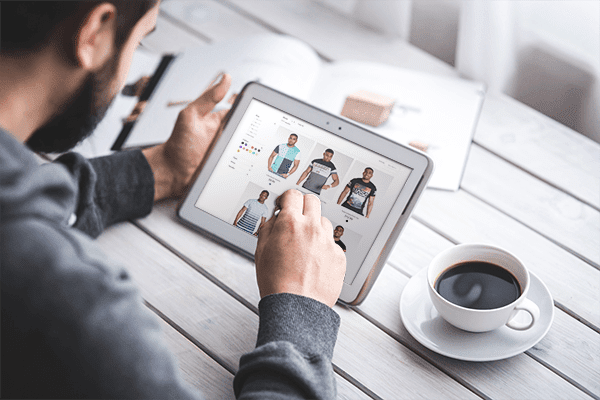The traditional retail shopping experience involves smiling store employees greeting customers and offering assistance or product recommendations based on the shopper’s needs, preferences and likes. In today’s online shopping arena, the helpful greeter is artificial intelligence or AI. Ecommerce personalization makes shopping simpler and more pleasurable for consumers, and it’s good for your company’s bottom line. Discover all the powerful and effective ways ecommerce personalization can improve your company’s online shopping experience and boost sales.
What is Ecommerce Personalization?
Ecommerce personalization relies on advanced machine learning and smart AI modules to give each customer a custom-made shopping experience. This effective tool analyzes each individual customer’s browsing behavior, purchase history, location, demographics, and other data to identify the individual’s reason for shopping and personal preferences, needs and wants. The customer then receives relevant content and product recommendations that fit the specific individual.
Effective ecommerce personalization follows several rules. It meets users’ needs, avoids poor recommendations that turn potential customers away and offers a potential return that justifies your investment. Look for these three factors as you evaluate potential e-commerce personalization resources.
Why Use Ecommerce Personalization?
Your new or established business may be thriving or in need of assistance right now. Wherever you are on the economic spectrum, e-commerce personalization offers four key potential benefits.
- Understand customers.
Smart AI allows you to confidently interact with customers based on data and facts. Eliminate guesswork and quickly and accurately determine what a customer wants and needs. - Meet a customer’s needs.
According to recent e-commerce personalization trends, customers want more personalized suggestions as they shop. In fact, nearly three out of four customers strongly dislike seeing irrelevant content as they shop. - Build rapport and trust.
When you create a memorable shopping experience and make each customer feel special, you invest in a foundation that could lead to future sales. - Improve conversion rates.
Customers who experience personalized shopping sessions are five times more likely to purchase a product versus customers who experience a non-personalized shopping session. The average order value (AOV) is also eight percent higher on personalized shopping sessions versus non-personalized shopping sessions. Multiply these conversion rates by the number of customers who visit your site, and you see the potential benefits.
How is E-commerce Personalization Powerful and Effective?
Companies can use ecommerce personalization to complete several essential tasks in an efficient manner. Consider the power and potential that your business could harness if you could:
- Direct shoppers to the exact items and collections they want to see.
- Adjust the home page to the shopper’s personality.
- Show category-specific coupons.
- Eliminate distractions during the shopping experience.
- Consider your store’s preference and what you want to sell.
Let’s look at these examples of powerful and effective personalization that ensure a win for your customers and your business.
1. Search and Collections
Machine learning AI uses textual and visual catalog information to create a shopper profile for each customer and present unique data based on the profile. This means you can promote items that match the shopper’s preferences while you also respect the common Merchandising Rules and suggest items based on what you want to sell.
2. Upsells and Cross-sells
Smart AI utilizes the “wisdom of the crowds” and the characteristics (e.g. product type, color, pattern, etc.) of each shopping session to curate a list of complementary upsell and cross-sell items. This intuitive tool essentially uses data to read a customer’s mind and meet his/her current and potential needs while selling more products.
3. Emails and Newsletters
Connect with customers in their inbox after they leave your website. A personalized email or newsletter provides shoppers with information and offers that might entice them to continue shopping. Include product recommendations, special deals and new offers in these personalized communication tools. Links in the emails or newsletters may send customers to personalized pages and campaigns on your website, too.
Here’s an example of how e-commerce personalization works for BrightMinds, a company that uses Fast Simon. Through personalization based on a customer’s shopping history, demographics and preferences, shoppers receive a tailor-made shopping experience and the conversion rate exceeds 25%. Relevant information helps shoppers discover, select and buy the products they need and want.
Ecommerce personalization has the potential to change the way your customers shop and to boost your company’s bottom line. You could spend time and money developing your own e-commerce personalization tools, or turn to a company that’s already done the work for you. Whichever option you choose, make time to evaluate the powerful and effective ways e-commerce personalization helps your customers and your business.
